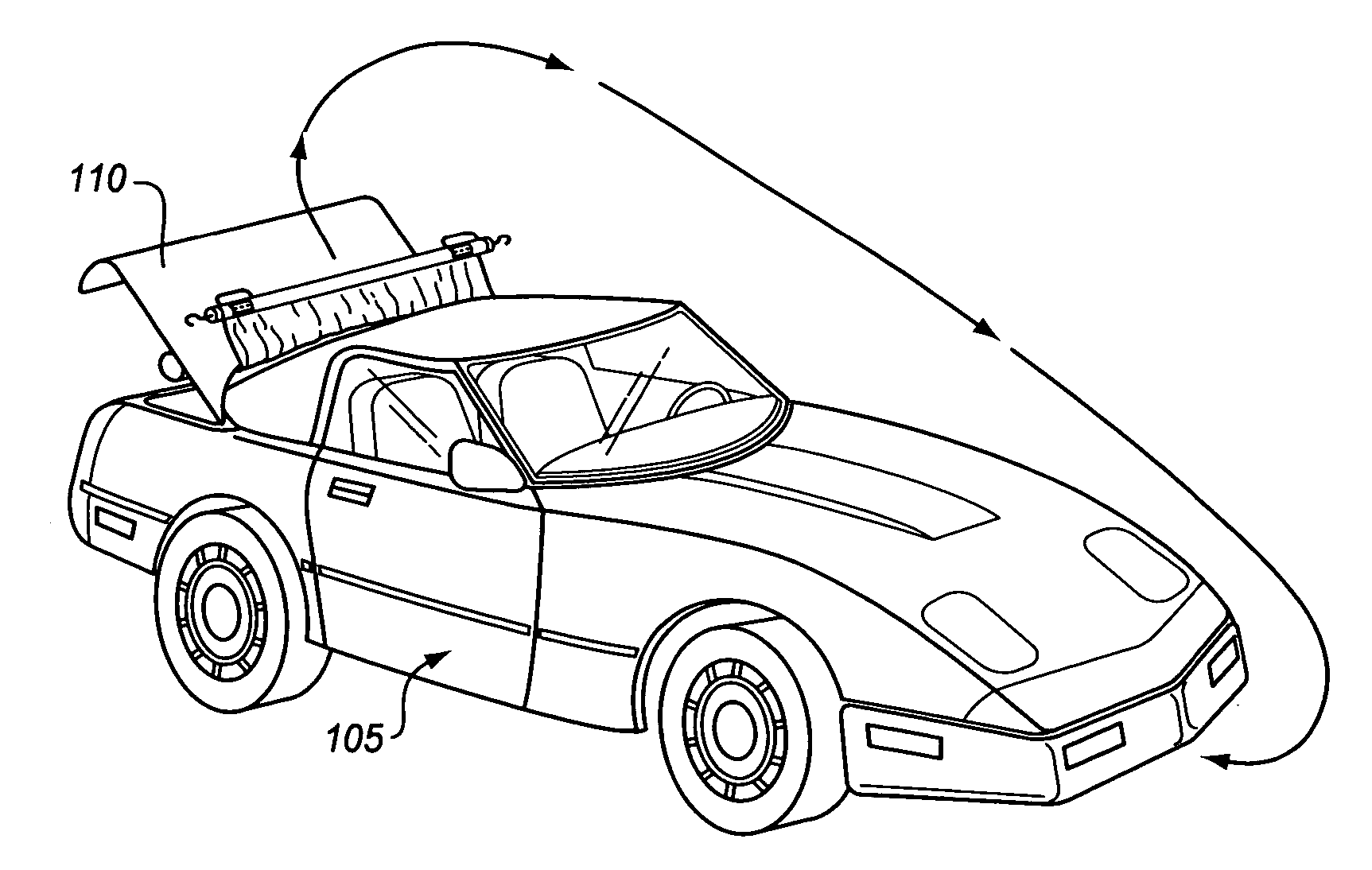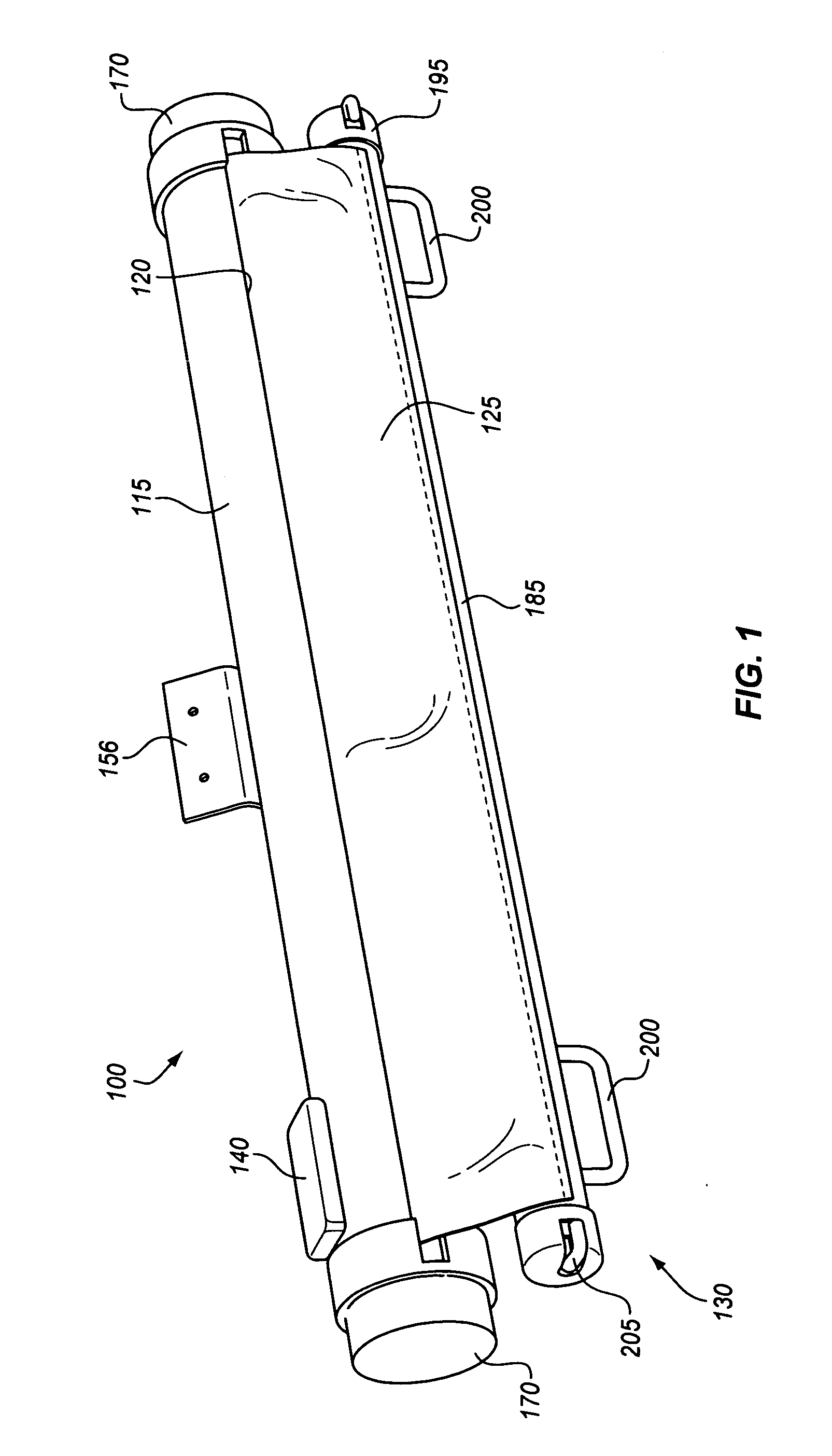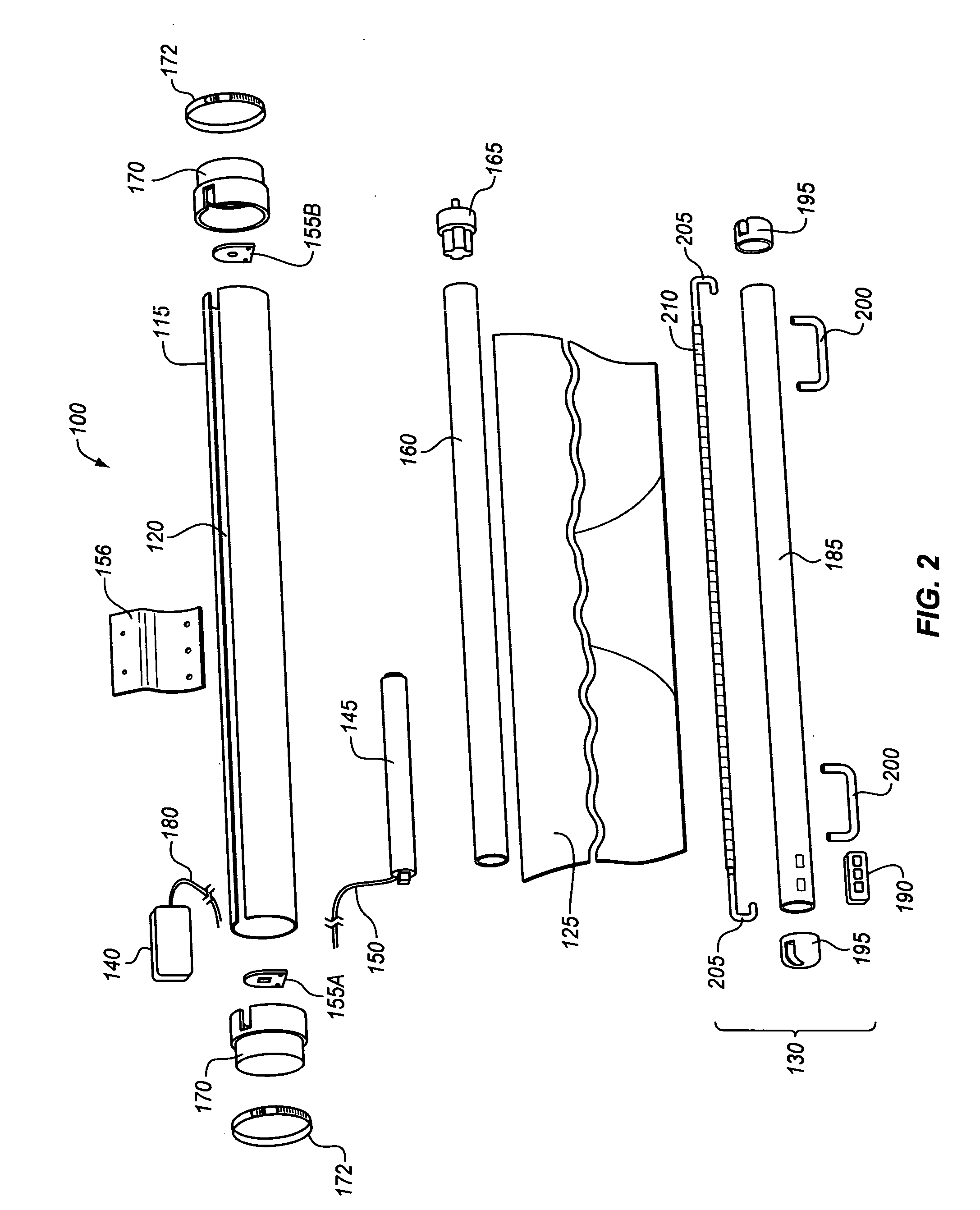Retractable roll-up cover
a roll-up cover and retraction technology, applied in the direction of roofs, vehicle components, transportation and packaging, etc., can solve the problems of fabric cover occupying significant space in the trunk, the cover cannot be practically folded to its most compact size, and the installation or removal of the cover cannot be carried ou
- Summary
- Abstract
- Description
- Claims
- Application Information
AI Technical Summary
Problems solved by technology
Method used
Image
Examples
first embodiment
A First Embodiment Vehicle Cover System
[0036]FIGS. 1 & 2 are depictions of a first embodiment cover system 100 designed for mounting in anywhere in the trunk of a sedan 105 (see FIG. 3A-E). For instance, the cover system can be mounted to the ceiling of the trunk lid 110 (see FIG. 3A-E) proximate the front edge of the lid. Other variations of the first embodiment are contemplated wherein the system is designed for incorporation into the bumper of new vehicles as an OEM option. The cover system takes up minimal volume in the trunk (about only 500 cubic inches for a typical system). And where the cover system is mounted up against the ceiling of a lid, the trunk volume taken up by the cover system is volume rarely utilized when transporting items in a trunk. While the system is typically utilized with a sedan, variations can be mounted to hatchbacks and wagons.
[0037] The first embodiment comprises a tubular generally (although not necessarily) cylindrical housing 115 that has a slit ...
second embodiment
A Second Embodiment Vehicle Cover System
[0065] Referring to FIG. 5, a second embodiment vehicle cover system 300 configured to cover the windows and roof of the associated vehicle 305 to shield the vehicle's interior from the rays of the sun is illustrated. Generally, except for the fabric cover 310 itself and the system's dimensions, it is substantially similar to the first embodiment and is utilized in a similar manner albeit to cover only the windowed surfaces and the roof of the vehicle opposed to the entire vehicle. In one variation, the system fully retracted takes up only 375 cubic inches of volume in the trunk of a vehicle.
[0066] The primary difference in the fabric cover 310 and the fabric cover 125 of the first embodiment is the cover's size. It is typically configured to cover only the top portion of the vehicle that includes windows. Another difference is that the bottom perimeter draw string of certain variations of the first embodiment is eliminated. Spring (or bungee...
third embodiment
A Third Embodiment Vehicle Cover System
[0067] Referring to FIGS. 6-8, a third embodiment vehicle cover system 400 configured to cover a motorcycle (not shown) is illustrated. This embodiment is generally similar in appearance to the first and second embodiments but unlike both of the previously described embodiments, this embodiment is manually operated. Further, this embodiment is designed to mount on a motorcycle license plate mounting bracket. The cylindrical housing 405 is also significantly shorter than the automobile based cover systems. In one variation, the system fully retracted takes up only 180 cubic inches of volume behind the motorcycle seat or at the license plate location. Perhaps the most significant visual difference is the incorporation of a hand crank assembly 410 on one end of the housing.
[0068] Internally, the tubular motor and roller of the previous embodiments are replaced with a single roller (not shown) constructed of plastic, metal, wood or another suitabl...
PUM
 Login to View More
Login to View More Abstract
Description
Claims
Application Information
 Login to View More
Login to View More - R&D
- Intellectual Property
- Life Sciences
- Materials
- Tech Scout
- Unparalleled Data Quality
- Higher Quality Content
- 60% Fewer Hallucinations
Browse by: Latest US Patents, China's latest patents, Technical Efficacy Thesaurus, Application Domain, Technology Topic, Popular Technical Reports.
© 2025 PatSnap. All rights reserved.Legal|Privacy policy|Modern Slavery Act Transparency Statement|Sitemap|About US| Contact US: help@patsnap.com



